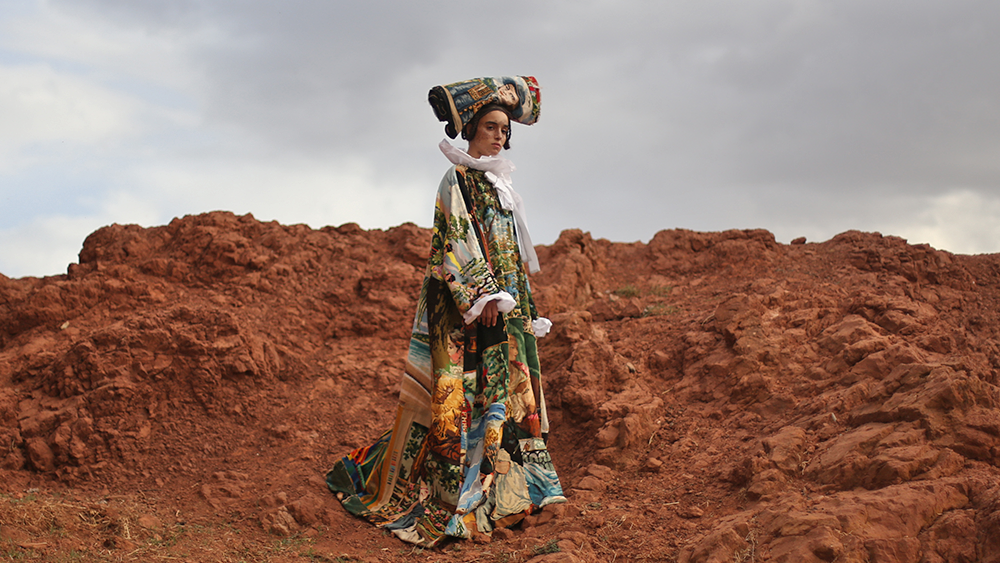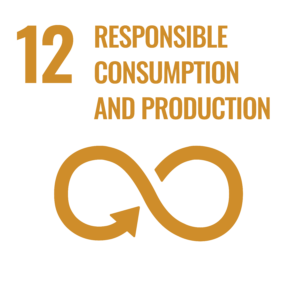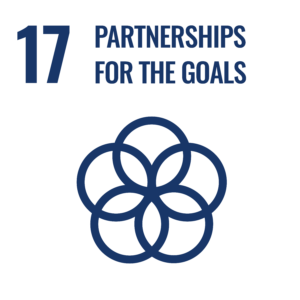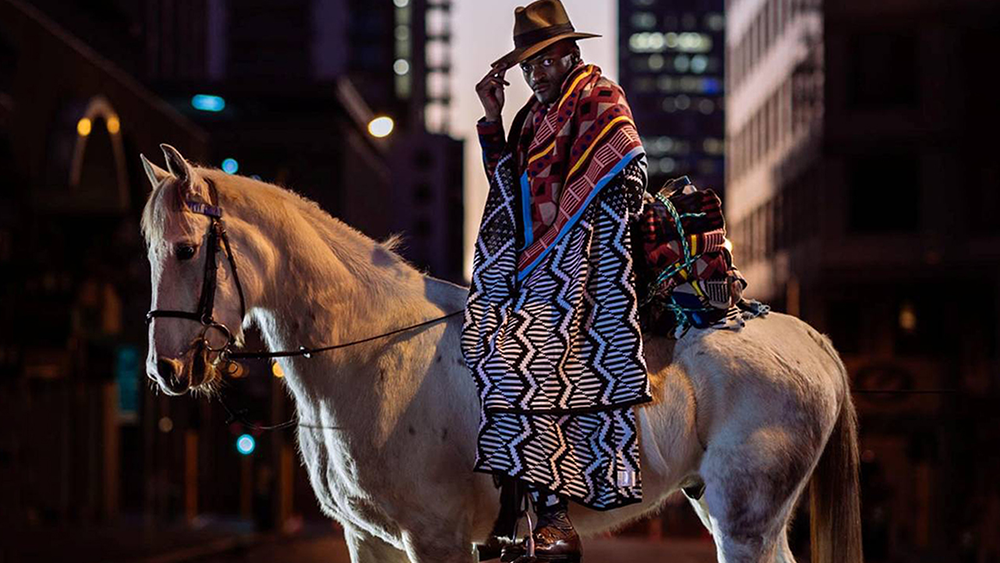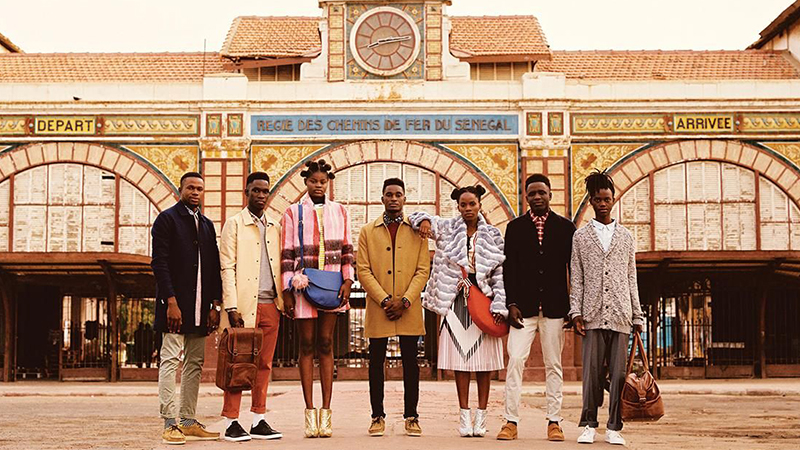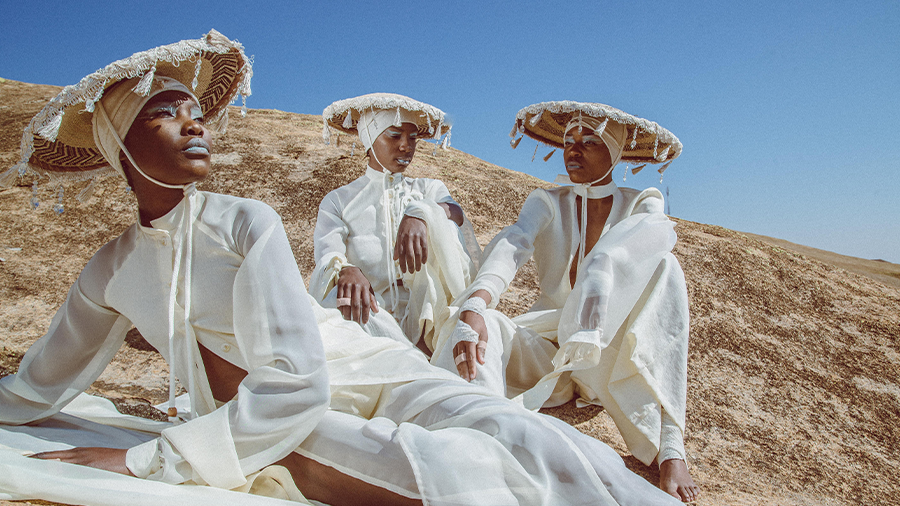Premium knitwear that celebrates traditional Xhosa aesthetics
Preserving Memory
Artsi Ifrach, creator, artist, designer of the label Art/C – fully made in Morocco, is direct, frank and forthright in his approach to life, love, art and identity; yet this self- described Israeli- Moroccan designer living in the heart of Marrakech, reveals a fire soul with keen perception, deep sensitivity and reverence for people and memory, legacy and history, art and creation. Intro Africa connects with Art/C transforming fashion.

When asked why he defiantly casts off labels and refuses to call himself an artist, Artsi simply answers, ‘I am the same as everybody else and different like everybody else.’
Culture and Art have the same thing in common, it’s education. Culture and art preserve the world, makes it interesting and rich and shows how powerful human beings can be with what they make.
Artsi Ifrach
A meeting with Art/C
IA: Artsi means ‘my country’ in Hebrew and Arabic. What brought you back to Morocco, the land of your birth?
ARTSI: ‘I am Moroccan, I am Israeli, I am a designer, I am a spiritual person, all of these things I take into consideration when I’m working and these journeys make my universe richer and help me to evolve. All of these eclectic things, all of the countries I come from and have journeyed through, make me who I am’

IA: We speak about identity, culture and religion.
ARTSI: ‘There are things you have a choice in and things you don’t. Religion is what one is born into, what you are taught to be. I think Culture is the most important. Culture can live onto next generations and it’s our roots, what defines us and what makes our world interesting and different, I think from there is where I get most of my inspiration.’
The design
IA: Artsi’s eclectic identity infuses itself into his designs, which pay homage to culture and vintage.
ARTSI: ‘ I don’t describe my designs because I cannot. It’s something that comes from within me, and which comes out and becomes something. It comes from religion, it comes from culture but it also comes from memories. I think if you want to touch people, you have to touch their memories, because it’s the only place that garments can become emotional. So I’m trying to touch the emotions of people through garments and through memories. I’m dealing a lot with culture and with vintage pieces because I think it allows you to really understand how it was then and as a designer, it’s very important for me to preserve this culture.’
The family home of Artsi
IA: What did you find when you re- opened your family home in Marrakech?
ARTSI: ‘We need to use things we haven’t been using and give them a new life. This is part of me preserving the culture, preserving the memory, giving respect for it, giving back something, somehow.’
IA: Tell us about the cartoon characters that come through in some of your designs.

ARTSI: ‘I like humour in clothes and I like people to smile. There is something I miss in fashion today- most people don’t ask where the designs come from because they already know. The press, publicity and pushing of this is overwhelming. The labels are becoming so familiar and recognisable, no one asks where things come from because they already know. When making garments, create for the personality of the person wearing it, so it intrigues enough to make people ask where it came from. So, that creates dialogue.
Artsi’s clients
IA: Who are your clients?
ARTSI: ‘Most have strong identities and personalities. I´m trying to dress their personalities, so they can be happy or they can be serious but they are wearing themselves, they are not wearing me. I’m just the one who makes it.’

IA: In an industry geared toward producing and selling as much as possible to consumers for profit, you only design only one of everything?
ARTSI: ‘The world is very big with interesting and individual people. I think all of us are one of a kind, so there is no reason to wear something that is not us. So I do one of a kind because I have respect for people, and I respect people that pay their money which they’ve worked very hard for, and I respect their personality. Because we are one of a kind, and our clothes should reflect that. Of course in the reality of life, we pay a price for it, and I am happy to pay this price because it is something that only gives me love and pleasure and to the person who buys it.

Sustainability in fashion
IA: Vintage speaks to repurposing and recycling. What are your views on sustainability?
ARTSI: ‘I think everybody who works with the public, and it doesn’t matter the scale of the public, has to take responsibility for what they’re doing. And I want to sleep well at night and be happy that what I’m doing is right. So in preserving the past, I think I have a responsibility to pass on the culture of the people to the new generation. We have to take a stand about what’s happening right now because climate change affects all of us and for my place, I’m not trying to change everything, I’m trying to help things to change, which is a different thing. ‘

IA: What was your contribution to ‘Marrakech Biennale 2016 : Not New Now’ ?
ARTSI: ‘I was very moved by what happened with the immigrants in Europe and how people reacted to it. Unfortunately we are calling them a group but they are individual people. I cannot know each one of them but I can say ‘what’s the story they’re telling us and what’s the culture they’re going to bring? ’ So I created a work which is the world through their eyes and the name of the work is ‘Insha’Allah’, which means ‘If God Wills it’. I hope to show that these people are not only refugees and that they have such a strong universe and perhaps they can contribute something which we are missing.’
Art & culture in society
IA: What do you think about the role and power of arts and culture in a society?
ARTSI: ‘Culture and Art have the same thing in common, it’s education. Culture and art preserve the world, makes it interesting and rich and shows how powerful human beings can be with what they make. For me the future is to go back, I don’t think the future is to go forward.’

IA: What influence have some of the places you´ve worked in, had on you?
ARTSI: ‘ I’ve travelled to countries which the Western world would consider third world countries but I think sometimes those countries have something to teach the Western world, perhaps more than the Western word can teach them. Poor countries are rich in a different way. What they have is a richness no amount of money can buy. They have a simplicity we forgot a long time ago and they don’t have to consume to be happy. There’s a huge difference.’

Morocco
IA: You speak about having come to Morocco with a number of perceptions.
ARTSI: ‘I’ve never felt as free as I have in this country. It’s given me back my freedom. Not only my freedom to be who I am but also freedom to explore my creativity in a way I’d never expected. The Western world, even as a creative person, somehow gives you a direction without you even noticing it. And here you don’t have this direction, you’re free to do it the way you want, to express it the way you see it. ‘
‘And of course I’m Jewish in a Muslim country. Outside, people think that it’s something really scary or really bad, which it’s not. We are coming from the same place, we are brothers, hopefully we’ll always be brothers. There is a huge similarity between Jewish and Muslim people. It’s the words, it’s the habits, it’s so many things that can bring us together and make us stronger. So actually, my brothers, they are part of my blood.’

Love
IA: You refer to Love often –What is your definition of it and what role do you think it plays?
ARTSI: ‘I have to feel things rather than think about things. I don’t go with my mind, I go with my heart because my heart will give me a better answer and the right one. So everything has to come from there. I think we create from that, we build everything from that and when you put love into things, it gives back to you. When you apply only your mind, it gives you only logic and I don’t think there is something logical about art. Or about culture. I have the word ‘ LOVE’ tattooed on my neck- It´s the first thing I see in the morning when I wake up.’
Art/C in Japan
IA: Tell us about your collection which showed at Commes De Garcons Dover Street Market in Japan?
ARTSI: ‘Oh Japan, Japan, I’m crazy about Japan right now. I’ve never been in such a world, this is a really different world and I think this is the future of everything. If you want to see where we are going, I think you should go to Japan. Because Japan actually gives you a glimpse of it. There is a lot of respect for creativity, so you don’t really see a lot of fake things, you see only creation. It can be high- end fashion or it can be low- end fashion but it’s very, very original.’
‘When I arrived there, I felt like I was doing something right. I don’t believe in accidents. You know, in the Jewish religion, it’s interesting that the words ‘ by accident’ mean ‘something God makes’. And I believe religion can give you some of the answers you don’t have. So probably nothing is by accident and I also believe that everything that happens, happens for good. So, I met, ‘by accident’ people from Dover Street Market, one of my favourite shops, which belongs to Comme de Garcons and it’s like a museum for creativity and has respect for creative people. And he doesn’t flag these things by big labels, although he has those, but flags them more by creativity. And this is what fashion used to be so hopefully they are leading some new way. I´m blessed to show my work there.´

African design
IA: You speak about being in different stages. Firstly, the Moroccon stage and now finding yourself in the African stage?
ARTSI: ‘I came to Morocco five years ago and the first thing I was, was the tourist. I found it fascinating, colourful, a bit oriental Euro- Disney, somehow. The stage of discovering Africa and how it exists in this country is fascinating because the art of the African people is so beautiful and interesting, that now I’m trying to build some kind of a universe with this and make it something new. Because it’s really interesting how they preserve their culture and they incorporate lots of masks- everything is about the human being, it’s very earthy, very strong.’
‘For everything there is a DNA, so I’m trying somehow to evolve the DNA, take it to a new place, because the source of culture also has to evolve to be given a new translation in order to survive and move forward. So I’m trying to create new masks, new pieces and use fabric in different ways by trying to step out of it and not make the fabric so particular.
African Art
When we speak about African art, most times it is described or presented in the same way and we always go to the wax fabrics everyone is wearing and we go to the wooden masks which are very tribal and very strong. But if you think about it, there is so much more to it. It’s very feminine and luscious and there’s so much life inside but how do you bring it back in a different way? I’m trying to soften it, trying to bring back the African art in a soft way and introduce the dialogue as to how we can see the women portrayed as powerful and the art in a much more feminine way, somehow different, in order to evolve perceptions about African art to a new place.’

Masks
IA: Why do you work with masks?
ARTSI: ‘I think the idea of masks is interesting because I think we all have one. When you put a cover over someone’s face, you see what you want to see and not what the person wants to show you and I think this is interesting with masks. I think some people feel more comfortable with masks, like they don’t have to pretend. It’s interesting to see what happens when you put a mask one someone and it’s also a wonderful thing to create because there’s so much imagination that goes into creating masks. Sometimes the masks can be more real. Wearing a mask can be liberating, it’s freer.’
IA: How do you deal with fear?
ARTSI: ‘ I deal with my fears by accepting them and going towards them. For example, I’m afraid of flying, so I fly more because I want to see why I’m afraid of flying. Behind every fear is a good thing and so if I’m afraid of something, I want to go there because there is something behind it I need and which I want .’

Fear
IA: What are your thoughts on the role of the media and so much fear-based sensationalism?
ARTSI: ‘Well, It’s easier to control people if they are afraid, so the media can make us afraid. Or make us more interested. There are many other things happening which are not fearful, so it’s our choice and perhaps responsibility to focus on those things, to give them a place. I refuse to be afraid and this is my right as a human being. We are born with a choice in our thinking and we need to exercise that choice every day.
Sometimes people forget they have a choice and prefer to become the victim, not understanding that they are not. I came from a place where there is no more freedom and I managed to conquer it by being willing to leave and wanting to live. I exercise my choice every day, and we need to exercise our choice so that we can make a difference. It’s amazing what people can do but sometimes it’s also amazing what they don’t do.’
Influences
IA: Your work reflects an eclectic, multi- faceted, multi– layered aesthetic. What influences and inspires you and are there any other designers or creative people you’d like to work with?
ARTSI: ‘ I will give you an answer that I will repeat every time and I believe in this answer more than anything: I am influenced by everybody and by everybody who is an individual and who practises individuality. I am not influenced by designers because every designer creates their own universe. I have lots of respect for designers and for everyone who wakes up in the morning and does something with their imagination. That is the idea of a human being- we have something that is amazing that is inside of us and that is our imagination. It’s more powerful than anything else. So if you practice it every day and something comes out of it- Shapo! (I take my hat off to you)

Vintage
IA: Vintage is a strong theme in your work, let’s speak about vintage in keeping the past alive and about legacy.
ARTSI: ‘As designers, we have a responsibility to preserve culture or to create a new culture, so I’m dealing with vintage because I have a lot of respect for the past but I always question myself as to how we are evolving forward.‘
‘Vintage pieces are not made like new pieces today- vintage pieces were made to last. If you take vintage garments apart you can see that. The industry- I dislike that word because we are not the industry, we are people who make things and people are not industry, they are human beings and one of a kind. But for the purpose of this conversation, let’s say ‘industry’ today is based on consuming, how we can change it faster, so garments are not necessarily made to last- they are made to last for the trend they are, which is very short, usually 3 months or less.’
‘If you see how vintage garments are made, even the techniques they used are not being used anymore and the machines used then do not exist anymore. I’m trying to find the source of those things that will continue to last and which will still be strong. So I can take an old piece and move it forward because the people who created it, created something with so much respect for the work that it was made to last and one could own it for a lifetime or pass it onto future generations.’

Touching peoples memories
IA: You speak about touching the soul of people and touching their memories. Tell us about your decision to open your 250 year old family home in the heart of the old Jewish district of Marrakech, as homage to your love of design and creation.
ARTSI: ‘This was the house of my father, which I received and for me it was actually very emotional. If you go into someone’s house, you see them naked actually, because homes are private. As a tourist seeing Morocco , you go to the sites everyone goes to, to experience it as a collective culture not as personal one. Yet the personal culture is a lot more interesting because by definition, if you want to know Morocco, you have to know the people of Morocco.’
‘The doors and houses in Morocco are like the people of Morocco. On the outside, the people are really small and really simple and in Morocco, you have these small doors, but when you enter the house and it’s a huge AliBaba Universe. And this is exactly what happens in the mind of the people. I wanted people coming into this house to understand this dialogue between how small and how humble we are, but how rich we are inside. And this house is part of that dialogue.’
photographer Laila Hida
IA: Beautiful pictures adorn the rooms of your house- tell us about your work with photographer Laila Hida.
ARTSI: ‘Laila is a Moroccan photographer and we have a really interesting relationship. I come with a rich and very strong universe which could be seen as kitsch. Laila comes from the most simple, most relaxed and most emotional place and she makes me even better because she balances the drama that I have but in an empathetic way. We´ve captured images in Ethiopia, Spain, Morocco and Tokyo. The images are another part of my work because after my pieces are sold, what’s left is the picture. So ,the photos also have to last, and the perspective has to be that if I look at the images 10 years later, the content or subject is still alive. I’m also trying to eliminate time from my pieces and from my photos. There is no time, it has to live forever.’

Transforming pieces of the past
IA: In terms of longevity and transforming pieces from the past into pieces that are relevant for the future, what are the fabrics that fascinate you, and which do you enjoy working with?
ARTSI: ‘There is something very strong about the colours of Morocco because the Moroccan people love colours and they are so rich in their heads and happy, really rich and really, really happy. I’m not the one working with colours and I’ll explain why- I’m working with artisans and this is what I do- I create a sketch, for example, to make a scarf and I only make it in black and then the woman I work with , I tell her to make whatever she sees. The one who makes my scarf and embroideries is creative exactly like me so I let her be free completely to create it how she sees it and I do the same thing with my tailors.
We are doing something together, so they are also designers, and I give them the freedom to create their universe in this piece and they then create something which is magic. I let them live and enjoy it as I think this is also something that makes the piece more interesting. It’s something that comes from inside, I don’t know what will happen, I also keep the surprise for myself. The creative people I work with only make my work better- I’m not a control freak when it comes to creativity. It’s like a kibbutz- we all do the same!’
Thought Leader
IA: What do you think defines a thought leader and do you see yourself as one?
ARTSI: ‘First of all I’m not better than anybody, I’m just different like everybody. The first thing I see in human beings is that we are the collective of different people and we create something we call the universe. I’m trying, through my freedom to touch people and I hope that people will be more free and will let go of their fears and be more able to be who they are, without being conscious of what people think about them. Because the only way that people see your light or your imagination or your own individuality is when you are strong enough to be yourself.’
‘A sentence in a book I read touched me strongly, about how your biggest fear is to be who you are. It can be scary to be who you are because we are in such a demanding society where people can be judgemental and it makes some people really afraid to be who they are. But you don’t have any other choice. The only person you can be is who you are. So what I’m trying to say is if we want to make a difference, we have to keep our difference, our individuality.’ Art/C transforming fashion.
